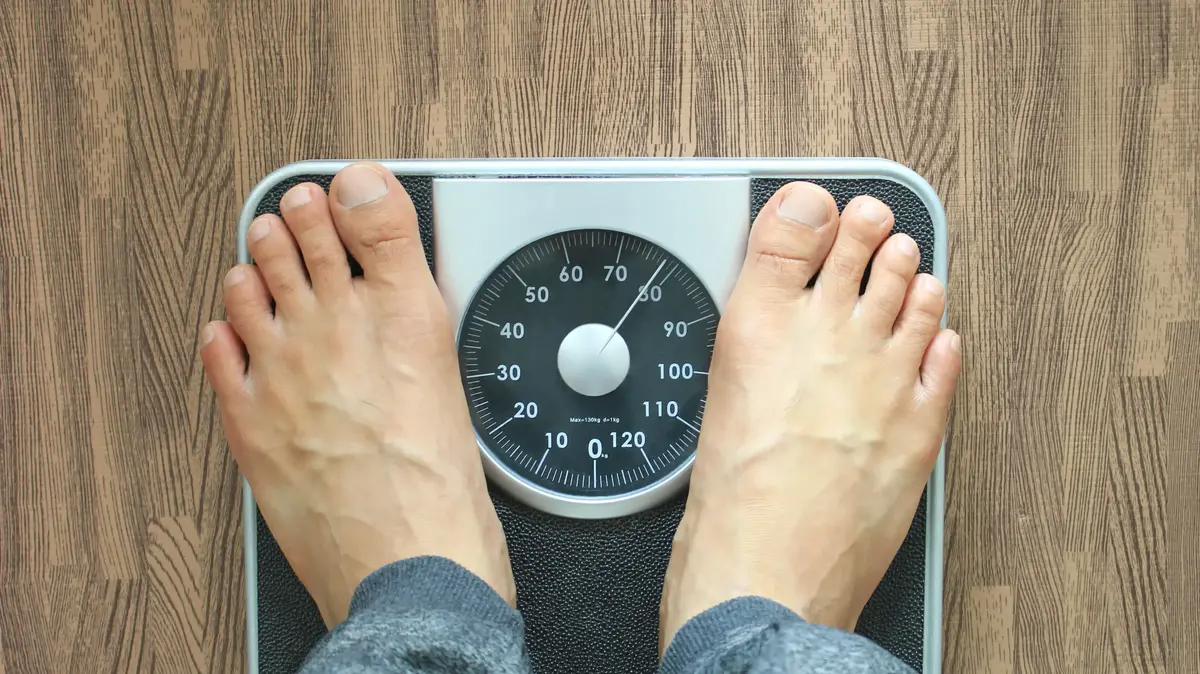For a long time, the number that the scale gives was central when
evaluating our health.
So much so, that the calculation that today is used to determine if a person has a normal weight (normal weight), overweight or underweight is the so-called Body Mass Index (BMI).
However, something
seems to be changing
regarding the relevance of weight when evaluating the health of the body.
The quality of both the food we eat and our body composition is gaining ground.
This is part of a context in which more and more nutritionists are against strict diets, recommending a varied diet and focusing on
healthy habits
that can be sustained over time.
Recently,
Clarín
reported on the campaign "Please, do not weigh me", in which it was the patients who requested not to be weighed unless the situation
really required it
.
Taking all this into account, it can be
difficult to answer
the following question: how do we know if our weight is healthy?
Are there guidelines for determining an “adequate weight” for each?
In which cases is it necessary to pay attention to body weight?
Laura Romano has a degree in Nutrition, and creator of the 80/20 method.
Photo courtesy.
Three parameters for an ideal weight
The nutritionist Laura Romano, creator of Integral Nutrición, is one of the detractors of the scale, and not only at a discursive level: according to her, in consultations
she does not usually weigh patients
, but rather the advice and eating plans are based on other parameters.
"I always say that the ideal weight is the
result of 3 things
: having a good metabolic control (which is observed with laboratory studies), then that internally the person feels good about their body, and that they have a healthy relationship with the food," he explains.
And he adds: "If he achieved that, at the expense of having sustainable habits - that is, he found a balance between the healthy and the unhealthy - that person for me is at his
ideal weight
."
To graph it, Romano says that he recently discharged a 75-kilo patient who, "if I calculated her BMI, would make her overweight."
"It happens that this patient has a lot of
muscle mass
, she has a very healthy body: she exercises, eats everything, indulges, and feels happy, she does not want to be a 90-60-90 model, she is happy that she is she went to buy clothes and it fits her well, she is comfortable with her body and in fact she
is in the best moment of her life
in relation to food. That is the ideal weight, "he reinforces.
The key is to incorporate healthy habits that are sustained over time.
Photo Shutterstock.
What is BMI and what is it for?
The BMI is the
result of a calculation
from which it is established whether or not a person has weight problems, whether due to cases of extreme thinness or obesity, according to the parameters established by the World Health Organization (WHO). ).
To calculate it, we must divide
our weight by our height squared
.
For example, if a person weighs 70 and measures 1.60, he should make 70 divided by 1.60 x 1.60.
The result that diagnoses a "normal weight" has to be between 18.5 and 24.9.
Below that number there are already problems with being thin, and above that there is already talk of being overweight.
If the result of that calculation is above 30, it is considered obesity.
"In the contexts or cases in which the BMI seems important to me, it is at
the population level
, when you want to do studies, compare anthropometric values, the weight-height relationship in a large number of people, for example when we talk about the fact that in Argentina 4 out of every 10 children are overweight, or 7 out of 10 adults are overweight, we do it thanks to the BMI," explains Romano.
In short, it considers it relevant when it comes to having data that is useful for designing
public policies
.
Measuring waist circumference can help detect central obesity.
Photo Shutterstock.
measure waist circumference
"At the office level, at the individual level,
I never use it
, because the BMI does not discriminate fat mass, muscle mass, water mass, bones. So if I calculate a BMI for a person based on their height and weight, I am not contemplating if that weight is muscle or fat, or what it is", he counters.
And he adds: "Taking the definition of obesity as
excess body fat
, which is bad for the body, which causes health problems, and related metabolic diseases, are not linked to being overweight or obese according to BMI, they are related to excess body fat.
Romano affirms that, if he has a measurement, he even prefers to measure the waist circumference rather than the weight, "because it is more related to central obesity", which is the one that is associated with the greatest risk of developing diseases.
Maintaining healthy habits helps the relationship between fat and muscle mass to be optimal.
Photo Shutterstock.
What is body composition and how is it measured?
Instead, body composition focuses on discriminating
how our weight is distributed
, which will give us percentages of muscle mass, adipose tissue, skeletal muscle, bone, organs, viscera, and residual tissue.
It is measured in the offices of many nutritionists with a special scale designed for this purpose.
As Romano reports, body composition measurements have replaced BMI measurements in many clinics.
"When we talk about body composition, we are talking about discriminating the weight in the different compartments that the body has, and not establishing it as a
single number
that tells me how much all that body mass weighs," he elaborates.
The nutritionist says that there are data provided by body composition studies that "help her a lot" in consultation with patients, to adjust the treatment objectives.
"They allow us to observe the relationship between fat and muscle, which is useful, for example, to be able to show a patient who asks to lose weight that perhaps what happens is that he has a large build because he has big bones and a lot of muscle mass, and not he has to lose weight, because the relationship between his fat and his muscle is super good," he says.
The risks of visceral fat
Romano explains that this type of study
discriminates against visceral fat,
which is the fat that is around the organs, "and is what causes metabolic diseases," he adds.
An abdominal and liver ultrasound can also help determine the existence of visceral fat.
And he illustrates the relevance of these data with an anecdote: "The other day something terrible happened to me, a patient told me 'I weigh 73, it's a man's weight' and the worst thing is that they had told her in one of these places where they do massive treatments to lose weight, they told him that more than 70 was a man's weight, that he had to weigh at least 69", he says, with surprise and discomfort.
"And I, who already have a body composition scale in my eyes after attending for so long, told her 'I'm sure you have a lot of muscle mass and you don't know it', she had never had a body composition analysis done , so I did the measurement in the office and it turns out that he did indeed have a lot of
muscle mass,
" he says.
The specialist reinforces the idea: "I am
not guided by weight,
I do not follow ideal weight tables, what matters to me in all the measurement of body composition is visceral fat, because it is what tells me about the metabolic state , is the one that generates the risk of diabetes, cardiovascular disease," he stresses.
"The rest is aesthetic excess weight, and that is worked with the patient from another side."
He also points out that when thinking about the eating plan, he does not have in mind how much a patient has to lose.
"The last thing I ask you is your weight, what I really focus on is doing a
good questioning
of what your habits are like, what your life is like, what things you eat, at what time of day (what do you eat, how much eat and when", he points out.
"From that, I begin to propose changes,
we are never going to force a patient
to reach X weight, it seems to me something tremendous," he concludes.
***
Do you want to continue reading about health and body weight?
These notes may interest you:
➪Mediterranean, DASH and flexitarian, the three best diets for 2023: what are their benefits and tips for adopting them
➪Obesity raises the risk of 13 types of cancer: how to measure it
➪The 5 numbers to have an "ideal heart", according to Harvard
➪What is the 80/20 method, to lose weight without depriving yourself of anything
➪Lower the belly, a matter of health: how to reduce abdominal fat
➪Hypopressive technique: 3 exercises that help reduce the waist
➪Is it enough just to exercise to lose weight?
➪Elderly people: when it is convenient to lose weight and how to prevent frailty
Do you want to add exercises?
Watch the videos of these routines:
➪How to promote the use of the treadmill in the gym to oxidize more fat
➪ 3 minute AMRAP workout to lose weight
➪ HIIT cardio: a 40-second routine to burn more calories than running
➪ How to lose weight to the rhythm of Latin pop with this "cardio chill"
***
➪ Do you have any questions about health and well-being that you would like us to address in section notes?
Enter the Clarín Help Center by clicking here, enter
Message to the newsroom
and then
Questions to Buena Vida
.
Write us your query and send.
Ready!
look also
How to put together a complete and healthy plate with an easy rule
5 tips to live longer and better: "We can be the architects of our aging", says an expert in geriatrics














